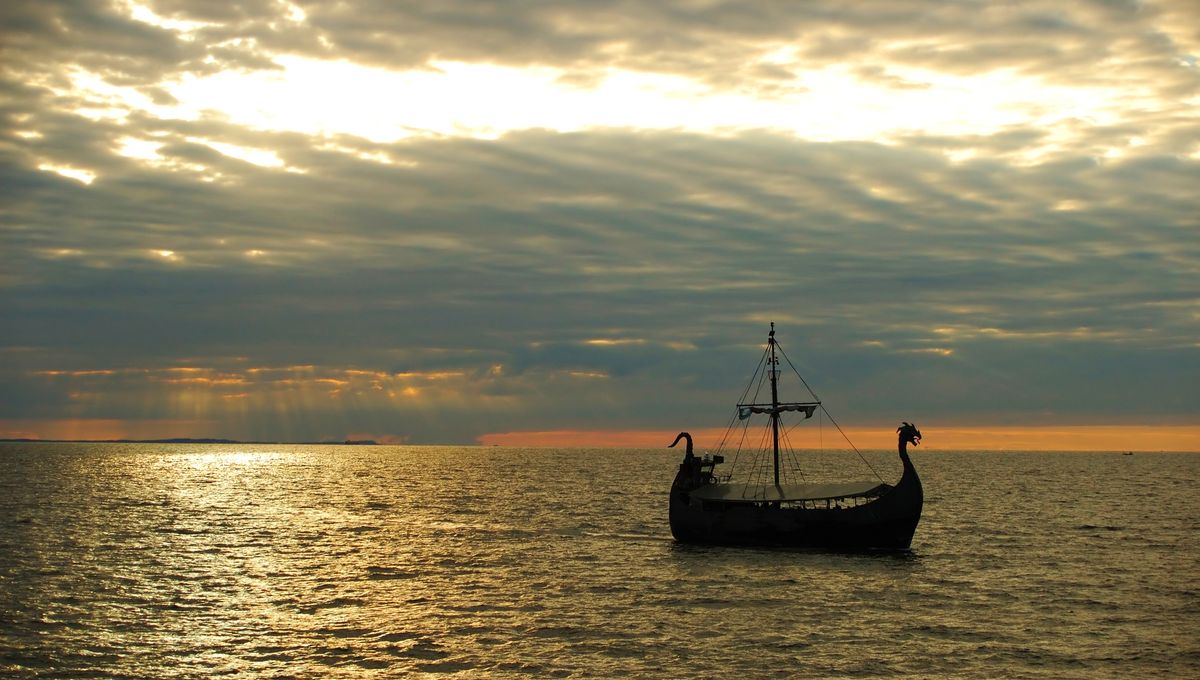
Have you ever wondered how the Vikings managed to navigate from Scandinavia to America a millennium before the invention of GPS systems? The routes they took often crossed through near-polar regions that were subject to dense fog, rain, and clouded skies that obscured the Sun and stars, making it extremely difficult to find their bearings using these celestial markers. Well, an answer that has become popular in recent years is that they may have used a special crystal to find their way. But was this really the case?
Anyone who is familiar with the History Channel’s hit show Vikings will remember the scene where Ragnar Lothbrok explains to his brother a secret means of navigating the seas in cloudy conditions. He then procedures to produce a translucent crystal that he uses to enhance the Sun’s rays. This scene has popularized an idea that has been hotly debated among historians and scholars for decades and which has become a commonly held belief – the Vikings navigated the seas using Iceland spar.
The Iceland spar, sometimes referred to as a sunstone, is a clear form of calcite (calcium carbonate, CaCO3) that is found in parts of Iceland and Scandinavia. The crystal exhibits a special property known as double refraction, or birefringence, which means it splits polarized light into two rays with different refraction indices and velocities. The result is that anything viewed through the crystal is doubled. Today, Iceland spar and similar crystals have various uses in precision optical instruments and LCD screens; Iceland spar was also an important mineral in World War II where it was used in the sighting equipment of bombardiers and gunners.
For navigation, so the idea goes, mariners such as the Vikings could use the crystals as natural Polaroid filters. When light enters the atmosphere, it is scattered and polarized. If you hold a crystal like a piece of Iceland spar towards the sky and rotate it, it is argued, the light passing through the crystal brightens and dims in relation to the polarized light in the atmosphere that centers on the Sun. The crystal’s double refraction is at its brightest when it is correctly aligned, thus indicating where the Sun is, even in cloudy conditions. If two readings are taken at different points in the sky, a navigator can identify the Sun’s direction and use that to calculate geographic north.
It’s a fascinating method of navigation that, some believe, is referenced in ancient Nordic sagas that mention mysterious “sunstones” that were used to find the Sun and set a ship’s course. It was only in the late 1960s that the link to Iceland spar was made by a Danish archaeologist called Thorkild Ramskou. But do we have any solid evidence that the Vikings used this method and, moreover, does it even work?
This is where things get cloudy. The current answer among researchers is a distinct “maybe” at best. The first challenge is that, to date, no sunstone has actually been found on a Viking ship or at a burial site. In 2013, French researchers from the University of Rennes say they found a chunk of Iceland spar on a British ship that sunk in the English Channel in 1592. Although the team did test it and speculated that it could have been used as a backup form of navigation to accompany imprecise compasses, there is no evidence that this was the case. Moreover, the find relates to a shipwreck that occurred centuries after the Vikings supposedly used this technique.
Then there’s the challenge of whether or not this method of navigation is actually reliable.
In 2016, a team of scientists set out to test this hypothesis. They simulated the conditions Viking explorers would have experienced on the seas and tested three types of crystal – calcite, cordierite, and tourmaline. They found that, in clear skies, all three crystals performed well. In slightly cloudy conditions, cordierite and tourmaline were better than calcite (only the purest calcite could compete with them), but in conditions where polarization was really low, calcite did better than the rest. All three crystals, however, were ineffective in overly cloudy and foggy conditions.
Further tests are needed to assess this tool as a reliable means of navigation, but, as Stephen Harding pointed out in The Conversation “if the method does not work under cloudy conditions using the kind of imperfect crystals the Vikings would likely have had, then the theory is probably wrong. And on clear days it would have been easier just to use calibrated sundials”.
This does not mean the Vikings did not use sunstones to navigate the seas, but it seems the case for this particular method remains inconclusive. Besides, there’s a good chance everything we thought we knew about Vikings is wrong.
Source Link: Did The Vikings Really Use "Sunstones" To Navigate The Seas?